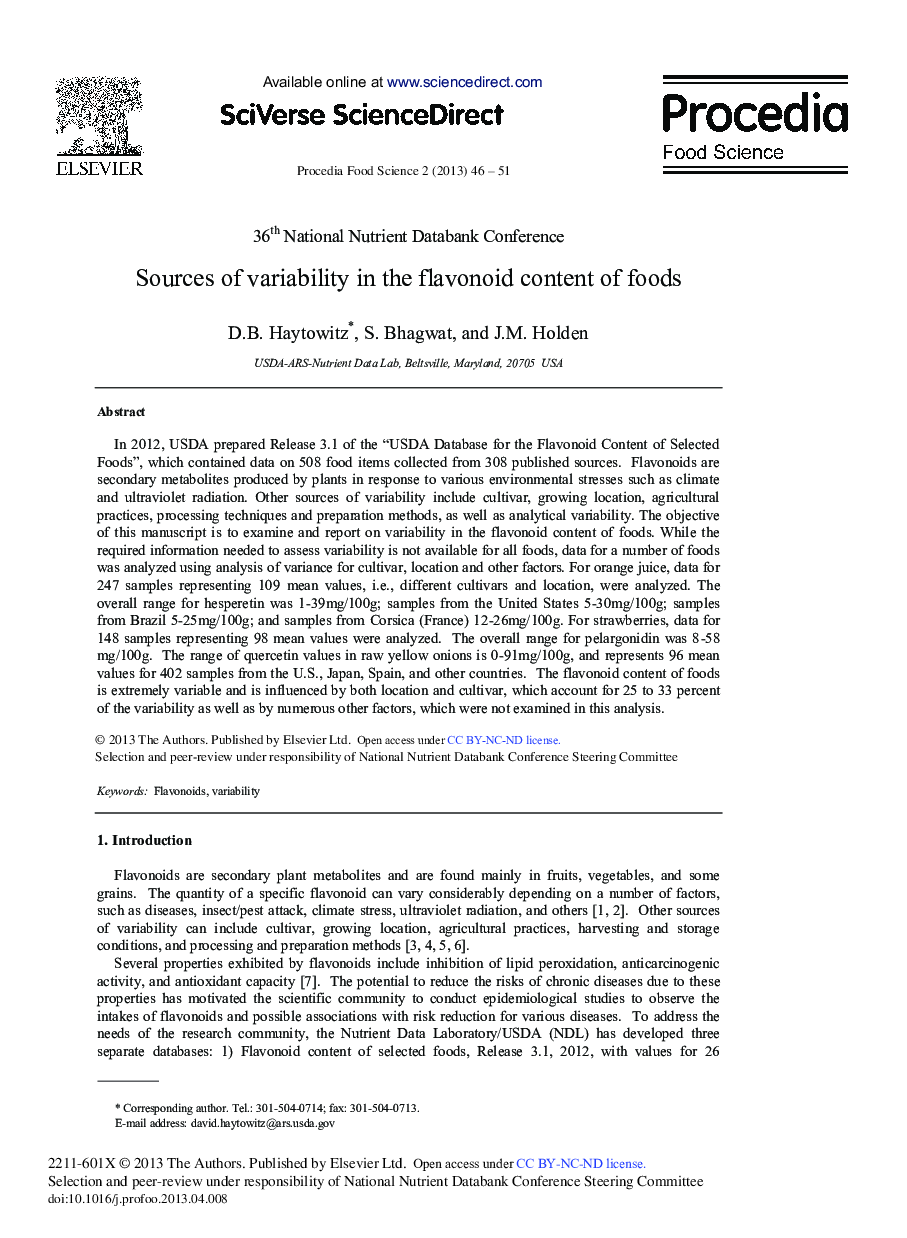| Article ID | Journal | Published Year | Pages | File Type |
|---|---|---|---|---|
| 1265487 | Procedia Food Science | 2013 | 6 Pages |
In 2012, USDA prepared Release 3.1 of the “USDA Database for the Flavonoid Content of Selected Foods”, which contained data on 508 food items collected from 308 published sources. Flavonoids are secondary metabolites produced by plants in response to various environmental stresses such as climate and ultraviolet radiation. Other sources of variability include cultivar, growing location, agricultural practices, processing techniques and preparation methods, as well as analytical variability. The objective of this manuscript is to examine and report on variability in the flavonoid content of foods. While the required information needed to assess variability is not available for all foods, data for a number of foods was analyzed using analysis of variance for cultivar, location and other factors. For orange juice, data for 247 samples representing 109 mean values, i.e., different cultivars and location, were analyzed. The overall range for hesperetin was 1-39 mg/100 g; samples from the United States 5-30 mg/100 g; samples from Brazil 5-25 mg/100 g; and samples from Corsica (France) 12-26 mg/100 g. For strawberries, data for 148 samples representing 98 mean values were analyzed. The overall range for pelargonidin was 8-58 mg/100 g. The range of quercetin values in raw yellow onions is 0-91 mg/100 g, and represents 96 mean values for 402 samples from the U.S., Japan, Spain, and other countries. The flavonoid content of foods is extremely variable and is influenced by both location and cultivar, which account for 25 to 33 percent of the variability as well as by numerous other factors, which were not examined in this analysis.
